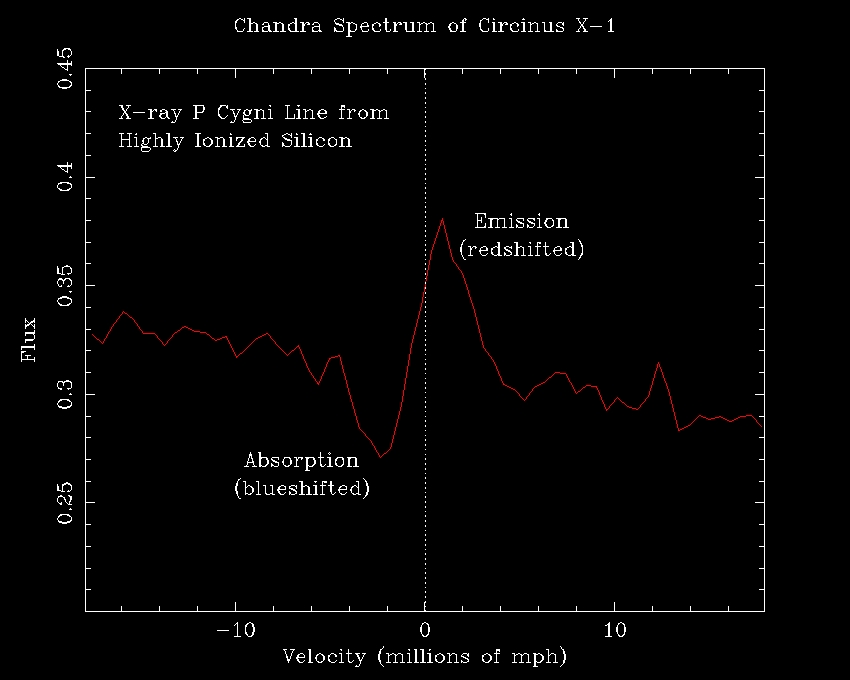
 Credit: Brandt, N. and Schulz, N., 2000,
The Astrophysical Journal, Volume 544, Issue 2, pp. L123-L127
Credit: Brandt, N. and Schulz, N., 2000,
The Astrophysical Journal, Volume 544, Issue 2, pp. L123-L127
Wild Wind Blowing
Nearly all types of stars and galaxies eject matter into space. Such "winds" may be driven outward by the force of light, or from high pressure regions. Stellar and galactic winds play a significant role in shaping the material between stars and between galaxies, and provide a means for stars and galaxies to enrich this material with heavy elements. The best probe of these winds is via spectroscopy, since the wind material produces a distinctive type of shape (or "line profile") in the observed spectrum. This shape is known to astronomers as a "P-Cygni" profile (so named for the star in which these profiles were first recognized) which looks like a deep absorption trough sitting next to a large emission peak. This profile shape is produced by a large outflow of material, in which the outflowing material in front of the star produces the absorption trough, and the material away from the star's surface produces the emission peak. Using the High Energy Transmission Grating Spectrometer on the Chandra X-ray Observatory, astronomers have for the first time detected a "P-Cygni" profile from a rather unusual source, an X-ray binary composed of a neutron star plus a star like our sun. The HETGS discovery of the P-Cygni profile is shown above. The absorption trough is clearly seen on the left side of the line (indicating material approaching us) and the emission peak is clearly seen on the right side of the line (indicating material which is predominantly moving away from us). Analysis of the P-Cygni line allows astronomers to probe the geometry of the outflow and to measure the speed of the wind - in this case, the wind is moving at an astonishing 4.5 million miles per hour.
Last Week *
HEA Dictionary * Archive
* Search HEAPOW
* Education
Each week the HEASARC
brings you new, exciting and beautiful images from X-ray and Gamma ray
astronomy. Check back each week and be sure to check out the HEAPOW archive!
Page Author: Dr. Michael F. Corcoran
Last modified July 2, 2001


